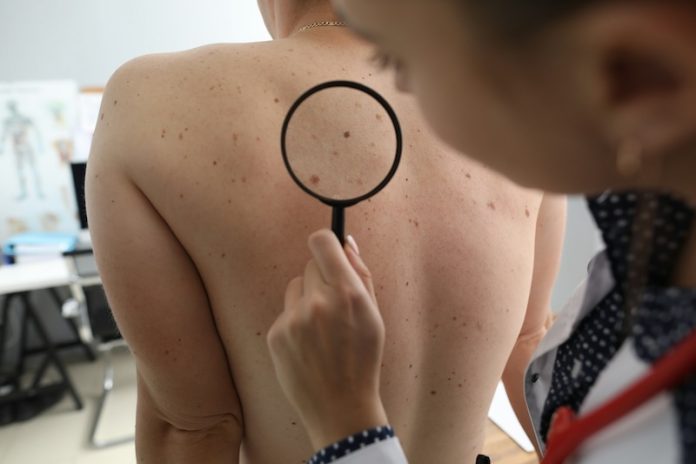
A global team of scientists has found a new and surprising way to treat cancer—by giving cancer cells nutrients that reactivate their normal functions and stop them from growing.
This method was tested on melanoma, a dangerous type of skin cancer, and the results are promising.
The researchers used an everyday nutrient, the amino acid tyrosine, and turned it into a special form of medicine using nanotechnology. Their study was recently published in the journal Nature Nanotechnology.
Melanoma develops from skin cells called melanocytes, which make melanin—the pigment that gives skin its color. Tyrosine is a key ingredient for producing melanin. While it’s a common nutrient, tyrosine is usually hard for the body to absorb in large enough amounts to be useful for cancer treatment.
To fix this problem, the scientists packaged tyrosine into tiny bubble-like structures called nanomicelles. These nanomicelles can travel through the body and stick to cancer cells, where they break down and release tyrosine directly.
The team tested the tyrosine nanomicelles on melanoma cells taken from human patients and in mice with melanoma tumors. The results were impressive. The tyrosine reactivated certain processes inside the cancer cells—specifically the process that makes melanin.
This forced the cells to slow down another process called glycolysis, which is how cancer cells usually get their energy. When glycolysis slows down, cancer cells can’t grow and spread as fast.
According to Professor Dayong Jin from the University of Technology Sydney, one of the study’s leaders, this method works differently from most current cancer treatments. Until now, many cancer drugs have focused on blocking the overactive processes in cancer cells.
For example, some drugs stop estrogen production in breast cancer or block sugar metabolism in other cancers. But this new study shows that instead of only blocking what’s overactive, scientists can also try to restart what’s been shut down.
Professor Wenbo Bu from Fudan University, who co-led the research, explained that this could lead to safer treatments using nutrients like amino acids, vitamins, or sugars. Since these substances are already part of our diet, the body handles them well. Different cancers will likely respond to different nutrients, but for melanoma, tyrosine appears to be the key.
The researchers also found that when they combined the tyrosine nanomicelle treatment with heat-based therapy—using a near-infrared laser to heat the cancer cells—they were able to completely eliminate melanoma tumors in mice within six days. Even better, the cancer didn’t return during the time they studied the animals.
Australia, which has the highest rate of skin cancer in the world, could especially benefit from this research. While more testing is needed before it can be used in people, this new method could eventually work alongside current melanoma treatments to improve results. It also opens the door to trying similar nutrient-based therapies for other cancers.
In summary, the study shows a fresh approach to treating cancer—not by starving it, but by giving it the right nutrients to wake up suppressed pathways and push the cancer cells to behave more like normal ones. This “feed to fix” strategy using nanomedicine could represent a new, safer direction in cancer therapy.
If you care about skin health, please read studies about top signs of diabetic skin disease, and Mediterranean diet could help lower the skin cancer risk.
For more health information, please see recent studies about eating fish linked to higher risk of skin cancer, and results showing how to combat the effects of aging on your skin.
The research findings can be found in Nature Nanotechnology.
Copyright © 2025 Knowridge Science Report. All rights reserved.



